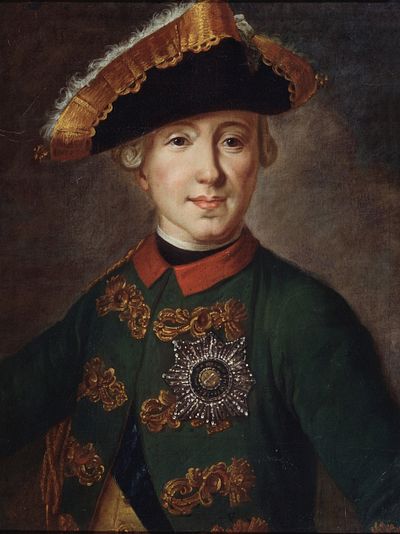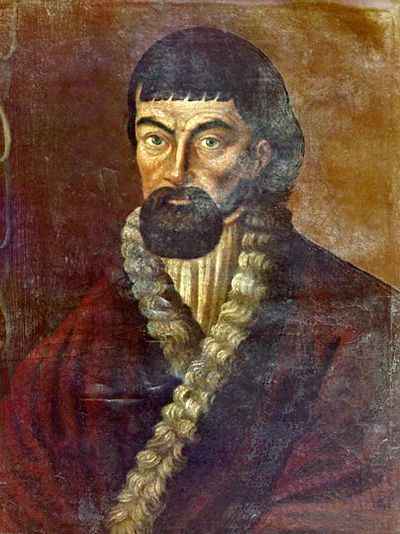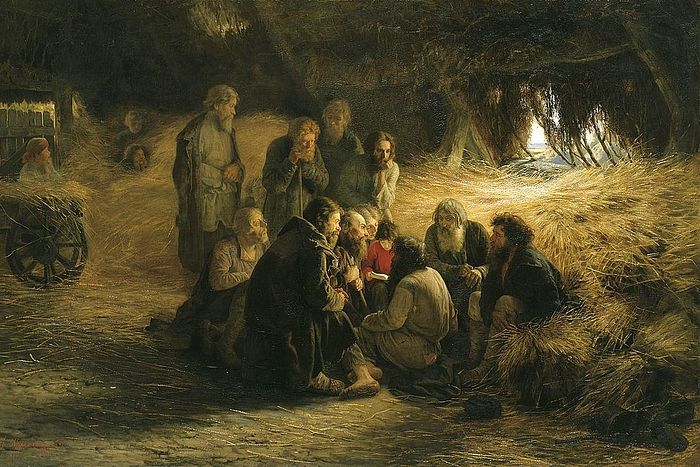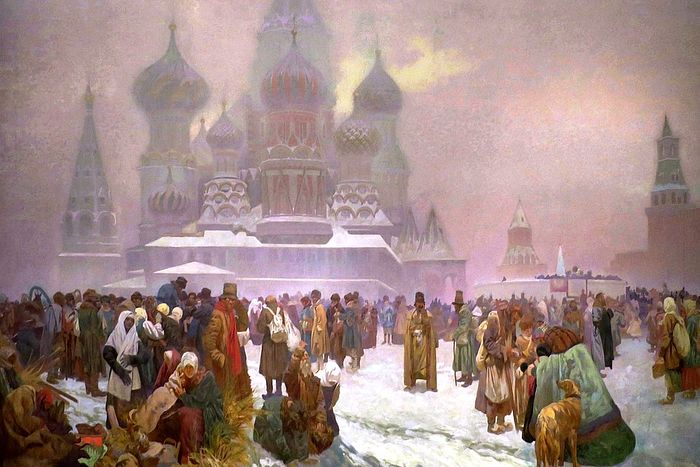Catherine the Great is remembered as a great ruler. But there is one blemish in her extraordinary career: serfdom. Serfs were basically slaves. And when she took the Russian throne in 1762, most of her subjects were serfs.
The new empress said that serfdom was “inhumane” and set out to abolish it. Yet, at the end of her 30+ year reign, millions of Russians remained enslaved.
So why did Catherine the Great fail the serfs?
The serfs

The serfs started out as peasants, people who worked the fields. But the rulers made a succession of laws that stripped them of their freedom. When Catherine reached the throne, only 20% of the Russian peasants remained free; the rest had become “serfs,” aka slaves.
According to the law, the serfs belonged to the land they were born in, and they were not allowed to leave.
The serfs were forced to work that land, which someone else owned. When the land was sold, they were sold along with it.
A minority of the serfs did not work the fields but lived in their master’s house and performed chores. They were what other societies would call a “house slave.”
Serfs could also be sold individually. In the newspapers of 19th-century Russia, one can find advertisements selling a good cook or a hairdresser.
Serfs had few rights. They could not own property, they were mistreated and flogged, and if they displeased their lord, they could be killed without repercussions.
According to the law, serfs were not slaves. Yet most people recognized that they were indeed enslaved. Catherine herself stated more than once that the serfs were slaves in everything but name, and that the institution was inhuman.
Serfs and free Russians shared the same ethnicity. So it was not like the Gauls who were enslaved in Rome or, in contemporary times, the Gypsies enslaved in Romania. Most serfs were Russians through and through.
Can we abolish serfdom?

Catherine was not the first Russian ruler who thought of abolishing serfdom. Others had tried and failed before her.
One of the problems was that Russia’s economy was heavily dependent on agriculture. And millions of serfs worked the fields.
But the empress had a plan. She wanted to modernize the agricultural sector, like the Western countries were doing. She believed paid laborers would be more efficient than the serfs. But the serf-owners would not hear of it.
Catherine, the enlightened sovereign

Catherine loved to read. And in her youth, she fell in love with the ideas of the Enlightenment, which, at the time, was a newish movement.
These enlightened authors stated that all humans were entitled to the same rights. They thought everyone deserved to be free and happy, and that the job of a monarch was to enhance the life of his or her subjects.
Now, these ideas may predominate in the West nowadays, but back then, they were revolutionary. Catherine fully embraced them.
Needless to say, these ideas were at odds with the concept of slavery.
So soon after the tsarina took the Russian throne in 1762, she decided the country needed new laws. She convoked a group of men to write these laws, and she asked them to abolish serfdom.
But a year later, the commission did not have the laws ready. By then, Catherine had her hands full fighting the powerful Ottoman Empire. So when the commission showed up without the new laws, she postponed the affair. As it would turn out, indefinitely.
Catherine defends the serfs -a bit

A few years later, Catherine outlawed the murder of serfs. She also granted them the right to appeal to the empress if one of their few rights had been trampled upon.
Since traveling to Saint Petersburg, the capital, to see her was not possible for most serfs, Catherine ordered the courts across the country to hear the claims of the serfs. Some serfs even won their cases and gained their freedom.
Catherine also established penalties for landowners who abused their serfs.
The setback: Pugachev’s rebellion

So Catherine had been making some progress with the serf’s situation. And she was still intent on freeing them. But then, in 1773 -eleven years into her reign- there was a rebellion led by a Cossack called Pugachev.
Pugachev had been in the army and had deserted.
He now showed up in the fields and claimed he was Catherine’s dead husband, Peter III Romanov.
That was troublesome in itself. Peter had been the legitimate emperor of Russia until Catherine, his German wife, had deposed him. Peter was killed a few days after losing his throne.
“Peter” now reappeared and began uniting all the -many- discontent factions of the empire. Pugachev roused the always-ready-to-rouse Cossacks (an ethnic group), the impoverished peasants, and the serfs.
The ex-soldier vowed he would end serfdom. Furthermore, he said he would give land to the serfs. All he needed to do first was depose the empress and take her throne.
Thousands of serfs ran away and joined his rebellion.
The rebels gain momentum and burn down cities
At first, nobody in the high spheres took the rebellion seriously. After all, there were peasant revolts all the time. And many men had claimed to be the deceased emperor before.
But the revolt kept gaining momentum.
Pugachev told his followers to kill the aristocrats. They did. They killed thousands. When the rebels captured the fortress of Tatishchevskaya, for example, they skinned its commander, raped his daughter, and killed his wife.
Pugachev’s people sacked and destroyed cities.
The uprising turned into the largest peasant revolt in Russia’s history.
Catherine beats Pugachev
So far, the Russian army had not been able to respond fully to the threat. Most of the troops were tied in the south, still battling the Ottoman Empire.
But now, the rebels were approaching the largest cities. They were close to Moscow, and then they would have the road open to Saint Petersburg, the capital.
So the generals patched things up hastily with the Ottomans, and they marched north to face Pugachev.
The Russian army crushed the insurgents in a few battles.
Pugachev fled to Cossack territory, but his people betrayed him and delivered him to the authorities. His rebellion had lasted a year and a half.
The aftermath of the rebellion
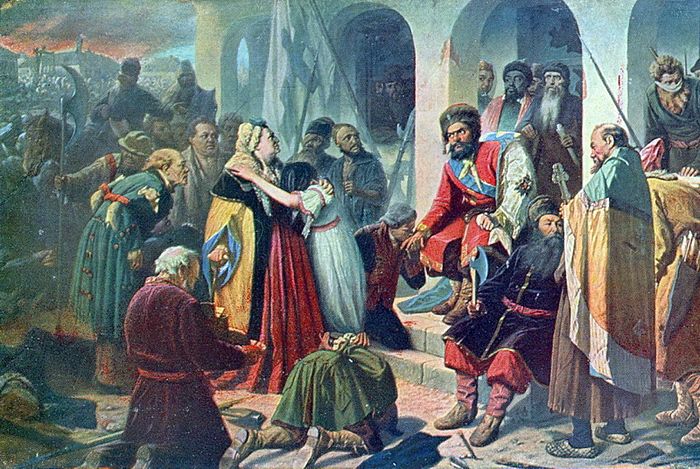
The revolt showed Catherine the weak points in the administration of her vast territory. She realized she needed stronger people in charge of the provinces.
But more importantly, it completely changed her view of the peasants and serfs.
Until then, she had seen them as harmless victims who needed saving. Now she saw them as a threat to the stability of the empire.
Before, she had been willing to affront the serf-owning nobility to ease the serfs’ lives. But after the rebellion, she realized that she needed the nobility on her side. She needed their support and resources during emergencies. Meanwhile, she could not trust the serfs. So the empress gave the lords even more power over their serfs.
Thus, the rebellion backfired. It sent enlightened Catherine into a 180-degree spin regarding her views on serfdom.
At the end of Catherine’s reign, the serfs were worse off than when she ascended to the throne. Plus, many of the previously free peasants were pushed into serfdom -as well as the recently annexed Ukrainians.
Ultimately, this great monarch failed both the serfs and her own high ideals. Her pragmatism won.
The abolition of serfdom
Many of Catherine’s successors tried to abolish serfdom too, but they failed. It was only in 1861 that Emperor Alexander II abolished it.

In the 1860s, Emperor Alexander freed 46 million privately-owned and state-owned serfs. That was about 70% of the Russian population.
More on Catherine the Great:
More Articles
